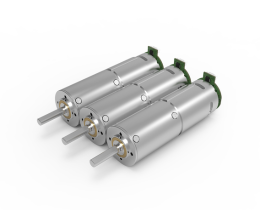Demystifying Your 24V DC Gear Motor Wiring: A Quick Guide
So, you’ve got a 24V DC gear motor in front of you. Maybe it’s part of a robotics project, an industrial conveyor belt, or even a custom-built automation setup. But let’s be honest—when you first unboxed it, the wiring diagram probably felt like hieroglyphics. Red wires, black wires, terminals labeled “A1” and “A2”… where do you even start?
.webp)
Here’s the thing: wiring a 24V DC gear motor doesn’t have to feel like solving a Rubik’s Cube blindfolded. Let’s break it down.
Why 24V? Let’s Talk Practicality
A 24V DC motor strikes a sweet spot between power and safety. Higher voltage than 12V means better torque for heavy-duty tasks, but it’s still low enough to avoid the risks (and regulatory headaches) of higher-voltage systems. Picture this: You’re automating a garage door. A 24V motor delivers enough muscle to lift the door smoothly without requiring industrial-grade electrical setups. Plus, it’s energy-efficient—think lower long-term costs and fewer burnt-out components.
Wiring Simplified: No PhD Required
Let’s tackle the diagram. Most 24V DC gear motors follow a straightforward two-wire setup: red for positive, black for negative. Connect them to your power supply, and you’re golden. But wait—what if your motor has extra terminals? Say, a third wire for speed control or a thermal sensor? Don’t panic. Those are bonus features, not roadblocks. For instance, a PWM (Pulse Width Modulation) wire lets you fine-tune motor speed without swapping components. Handy, right?
Q: “What if I mix up the polarity?”
A: Reverse the wires. Seriously. Unlike AC motors, DC motors won’t fry if you flip the positive and negative—they’ll just spin backward. Test it, laugh at your mistake, and fix it. No drama.
The KPOWER Difference: Because Reliability Isn’t Optional
Ever had a motor fail mid-project? It’s like your coffee machine breaking at 7 a.m.—infuriating. KPOWER’s 24V gear motors are built to avoid those meltdowns. How? Precision-engineered brushes reduce sparking, and sealed housings keep dust out. One user shared how their KPOWER motor survived six months in a dusty warehouse—no cleaning, no hiccups. That’s not luck; it’s design.
Pro Tips for Smooth Sailing
- Heat Management: Even the best motors hate overheating. Keep airflow unrestricted.
- Load Limits: Pushing a motor beyond its rated torque is like revving a car in first gear—it’ll scream, then quit. Check the specs.
- Connectors Matter: Cheap connectors cause voltage drops. Spend a little extra on gold-plated terminals—it’s worth it.
Final Thought: Wiring as a Gateway
A wiring diagram isn’t just a set of instructions. It’s a blueprint for what your project could become. Whether you’re building a solar-powered irrigation system or a DIY CNC machine, that 24V motor is your starting line. And with KPOWER’s blend of durability and simplicity, you’re not just connecting wires—you’re eliminating future headaches.
Still stuck? Reach out. We’re here to turn “What’s this wire for?” into “Look what I built!”—no jargon, no judgment. Just solutions that work.


































.webp)

